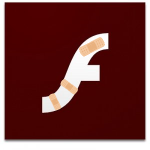 On May 3, Firefox users all over the world noticed that the browser’s add-ons suddenly stopped working and disappeared from the toolbar. This caused major consternation, as you might imagine. Mozilla has previously made changes to Firefox which disabled some add-ons, so there was initially some concern that this was intentional. However, it turns out that someone at Mozilla failed to renew a critical security certificate, which then expired on May 3rd.
On May 3, Firefox users all over the world noticed that the browser’s add-ons suddenly stopped working and disappeared from the toolbar. This caused major consternation, as you might imagine. Mozilla has previously made changes to Firefox which disabled some add-ons, so there was initially some concern that this was intentional. However, it turns out that someone at Mozilla failed to renew a critical security certificate, which then expired on May 3rd.
Mozilla added certificate checking to Firefox’s add-ons (extensions, themes, search engines, language packs) some time ago to weed out malicious add-ons and prevent them from being used. When the main certificate expired, Firefox suddenly identified all add-ons as invalid, and disabled them.
Many people use Firefox without add-ons, and those people were unaffected by this problem. Some people, including myself, use add-ons to provide functionality without which Firefox is almost unusable. For example, I use uBlock Origin to prevent Javascript from running on all web pages by default, and Dark Reader to make dark-themed web pages readable.
Once people started noticing the problem, they naturally tried to find workarounds, some of which did more harm than good. Mozilla scrambled to solve the problem, and on May 4 pushed out an official, temporary workaround using a little-known Firefox feature called Studies. Once installed, this fix did re-enable add-ons for many users, but didn’t help if the Studies feature was disabled, and was only effective for desktop versions of the browser.
On May 5 a new version of Firefox was released by Mozilla. Firefox 66.0.4 includes a single change that fixes the certificate expiry problem. There are a few caveats: some add-ons may need to be re-enabled manually. Certain add-ons will remain disabled. Other add-ons may need to be reconfigured.
This was a major (and embarassing) blunder, but Mozilla handled it reasonably well, although the information they published was occasionally somewhat misleading. There’s a useful record of what happened on this Mozilla blog post.
Update 2019May10: Yesterday, Mozilla published a followup/apology post.
 Over the last few days, two new versions of Firefox were released, each addressing a single security vulnerability.
Over the last few days, two new versions of Firefox were released, each addressing a single security vulnerability. (hamburger) button in the toolbar.
(hamburger) button in the toolbar. boot13
boot13 The latest release of Thunderbird, Mozilla’s email client, is
The latest release of Thunderbird, Mozilla’s email client, is  The latest Chrome release features a fix for one security vulnerability. There are about forty-five actual changes listed in the
The latest Chrome release features a fix for one security vulnerability. There are about forty-five actual changes listed in the  It’s update time once again, and along with the updates from Microsoft and Adobe, I’m going to annoy you with yet another reminder that Only You Can Prevent Internet Worms. That sounds kind of gross, actually.
It’s update time once again, and along with the updates from Microsoft and Adobe, I’m going to annoy you with yet another reminder that Only You Can Prevent Internet Worms. That sounds kind of gross, actually. As usual, Adobe has released software updates to coincide with Microsoft’s Patch Tuesday, which makes things nice and tidy with Flash being integrated into IE and Edge.
As usual, Adobe has released software updates to coincide with Microsoft’s Patch Tuesday, which makes things nice and tidy with Flash being integrated into IE and Edge.  Adobe’s contribution this month consists of new versions of Flash and Acrobat Reader.
Adobe’s contribution this month consists of new versions of Flash and Acrobat Reader.